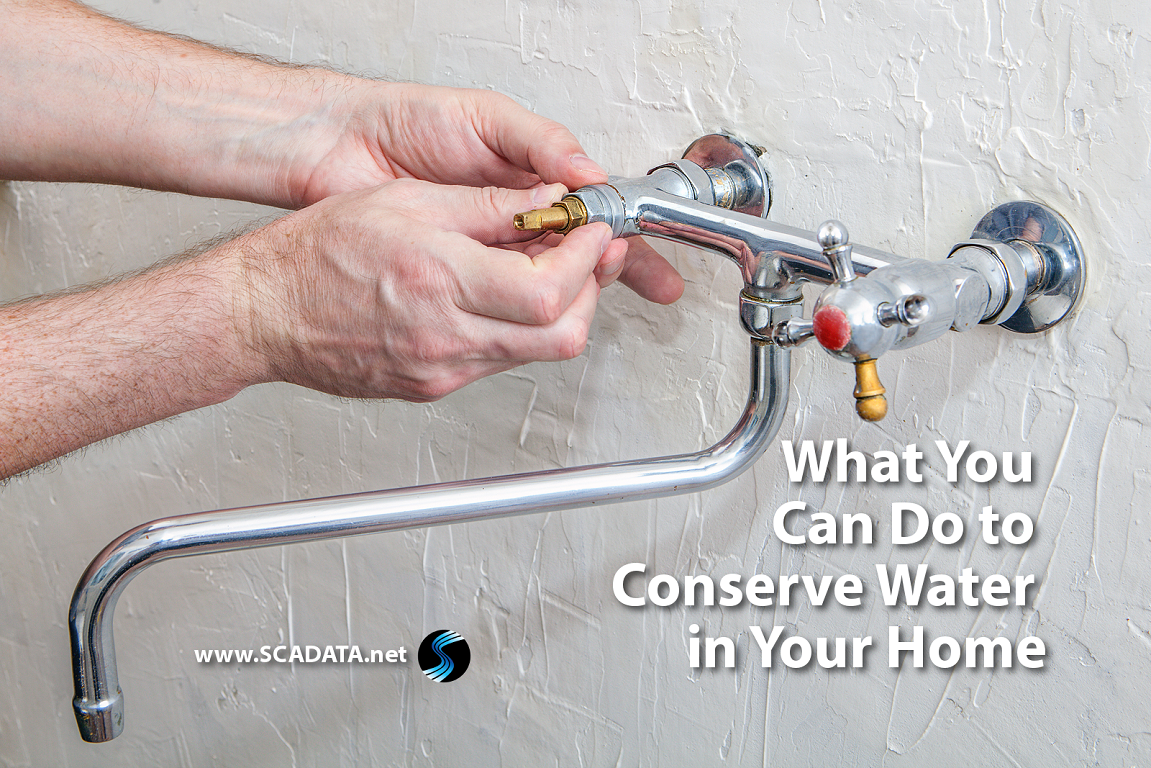Indoor plumbing is a fascinating thing. Although it often goes unacknowledged, having clean running water inside your home is no small feat. This doesn�t mean we should consume with abandon. Water is not unlimited. If we hope to keep our water safe for use in years to come, we need to utilize some conservation practices in our homes. As an added benefit, conserving water also help to lower your utility bills.
But, where do you begin? As an individual, it can often seem like water conservation is a problem that is out of your hands. However, it is often the actions of individuals put together that make the largest difference. You an easily make a difference in your own home with a few simple changes.
Here are some ways you can help conserve water:
Use water-friendly, low-flow shower heads and faucet aerators: According to eartheasy, installing these inexpensive components can reduce your water consumption up to 50%. Faucet aerators add air into the water flow, reducing the amount of water coming from a faucet. Low-flow shower heads use restrictors to reduce the amount of water coming into the shower. These tools reduce the water pressure, providing a softer shower, and can significantly cut down water consumption.
Reduce running water: While this one seems like a no-brainer, it can be difficult to realize just how much clean water goes down the drain when you aren�t paying attention. Simple things like shutting off the faucet while you brush, rinsing your razor in a sink of water, or filling the sink to rinse dishes can make a notable difference.
Check pipes for leaks: Leaks are a sneaky way to lose a large amount of good, clean water. According to the EPA, more than 10,000 gallons of water is wasted each year as a result of leaks. Simply fixing faulty pipes can make a huge difference in your water consumption. Want to see how much water is lost from a leak? Check out the USGS drip calculator.
Run dishwashers and washers only on full loads: Only wash dirty dishes and clothes when you have full loads. This makes the most use of the water you are using in your appliances. In addition, consider energy-efficient appliances when replacing.
Limit flushing your toilet: Face it. You don�t need to flush the toilet each time you blow your nose and use your toilet as a trash can. While we�re on the subject, don�t use your toilet as a trash can. Your toilet is one of the largest water consumers in your home. Flush when you need to and you will see a significant reduction to your monthly bill. You could also install a low-flow toilet, although this comes with a higher price tag.
Avoid baths: Showers are a much more efficient way to get clean. The average shower uses about 2.5 gallons of water per minute. If you have a low-flow showerhead, this is reduced by about half. An average bath requires between 40 and 50 gallons of water. As long as your showers aren�t excessively long (20 minutes or longer), showers will help you save water.
Repurpose your water: You can easily repurpose used water for other H2O dependent sources. While most used water isn�t safe to drink, it can be used for a variety of other tasks. For example, you can use the water left from boiling pasta to water landscaping or heating water on the stove rather than waiting for it to get hot out of the tap. Check the LA Times for several easy ways to conserve.
Be creative!: You can defrost your food by setting it out ahead of time instead of submerging in water. If you want to steam vegetables, put them over a pot of boiling pasta, a two for one job! You could even consider composting instead of using the garbage disposal to rid your home of old food. Consider the many ways you can reduce running water. With just a little creativity, you can make a significant impact on your own water consumption.
Conserving water will not only help create a sustainable future, it can also save you money. On a larger level, wastewater can be reused to help with conservation efforts. Read more about reusing wastewater and the opportunities it can create in our post.




